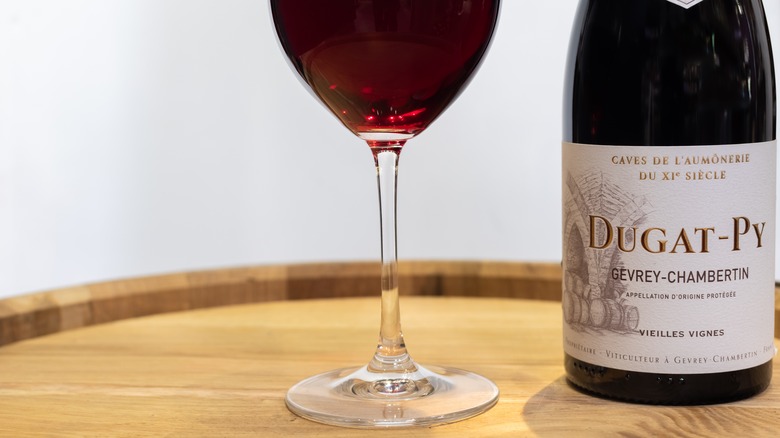Napoleon Bonaparte's Favorite Wine Is Some Of The Boldest In Burgundy
Napoleon Bonaparte's mental energies might have been focused on conquests and military strategy, but he did have preferences when it came to the food and wine served at his table. Bonaparte was known to reach for simply prepared dishes, Parmesan and Roquefort cheeses, almonds, and waffles rolled with cream. Bonaparte's culinary whims seem minor compared to his taste for wine, particularly French varieties like Pouilly Fumé and Burgundy. The French general was responsible for transporting cases of Burgundy to Egypt, and his affinity for this kind of wine seems to have accompanied his duties.
A written inventory found from 1814 details at least 13,000 bottles of wine stored at Bonaparte's estate. Bonaparte's first wife, Joséphine de Beauharnais, was responsible for the contents of the wine cellar and for keeping it stocked. Bonaparte sipped Champagne after celebratory occasions, yet his propensity for Chambertin was noted by both the man's valet and de Beauharnais' maid. Gevrey-Chambertin Pinot Noir is a full-bodied red with a reputation as being one of the most concentrated varieties found in Burgundy. Sips are smooth and velvety, with floral notes and deep, fruity waves that mature satisfyingly well.
A connoisseur until the end
In Bonaparte's homeland of Corsica, ice cubes were commonly added to wine, so his tendency to dilute glasses of Chambertin with ice and water wasn't particularly surprising. Unfortunately for Bonaparte, after he was sent to the remote Island of Saint Helena following his loss at the Battle of Waterloo, his coveted bottles of Chambertin would go bad or turn to vinegar by the time the British managed to get the wine to him. Bonaparte had to adjust his drinking habits accordingly, pouring a South African muscat known as Constantia instead from bottles that he received in monthly shipments until his demise.
The Burgundy Chambertin that Bonaparte once enjoyed is still made today with Pinot Noir grapes. Since 1936, bottles have been designated with an AOC label, and the classic wine has become associated with the north of Côte de Nuits, an area known for a longstanding tradition of producing textured, elegant reds with distinct terroir. Taste served glasses carefully and savor, as age will impact the overall experience a historic label like Gevrey-Chambertin can deliver. Perhaps that is exactly what Bonaparte was doing when he was diluting his drinks.

